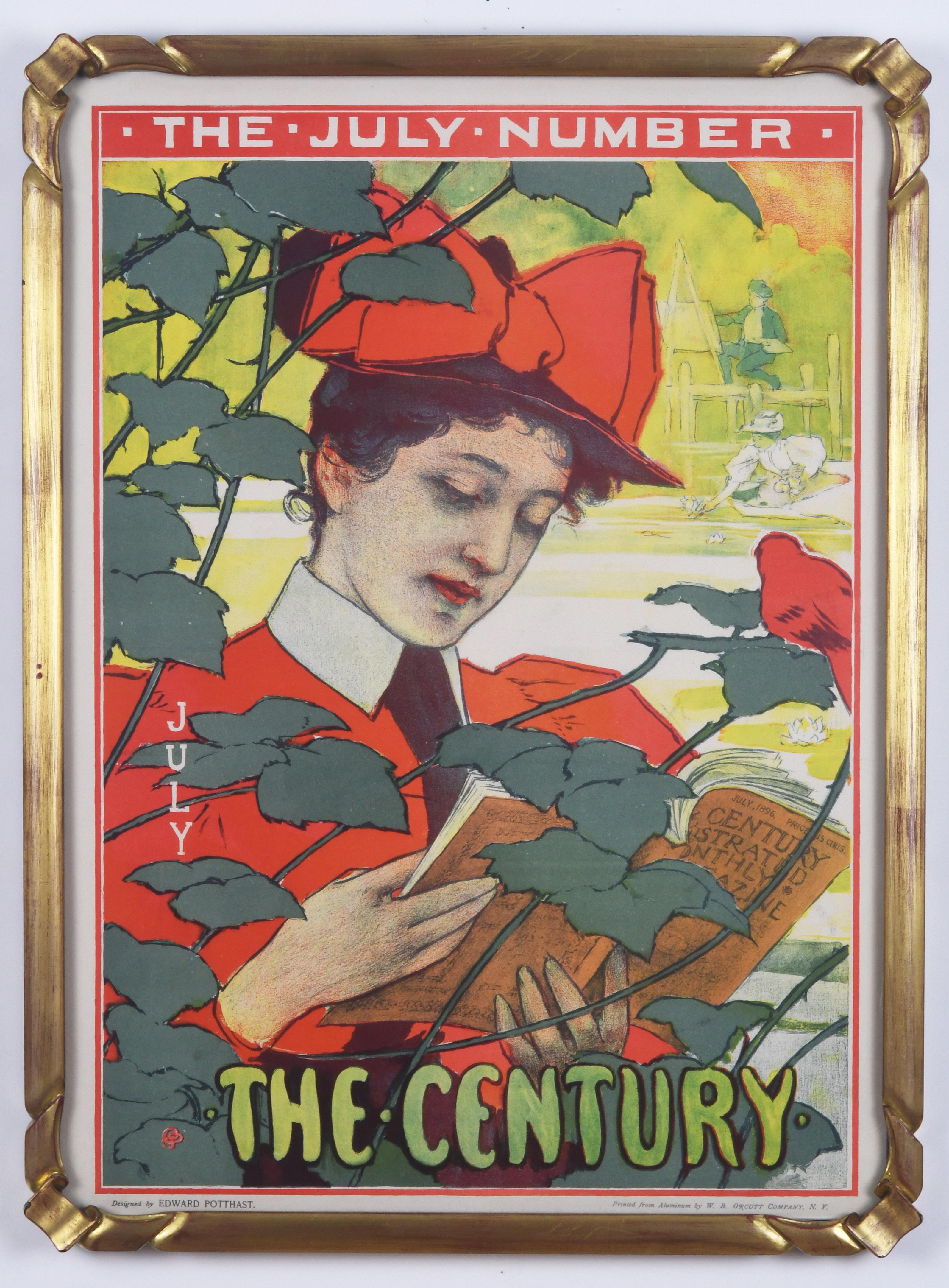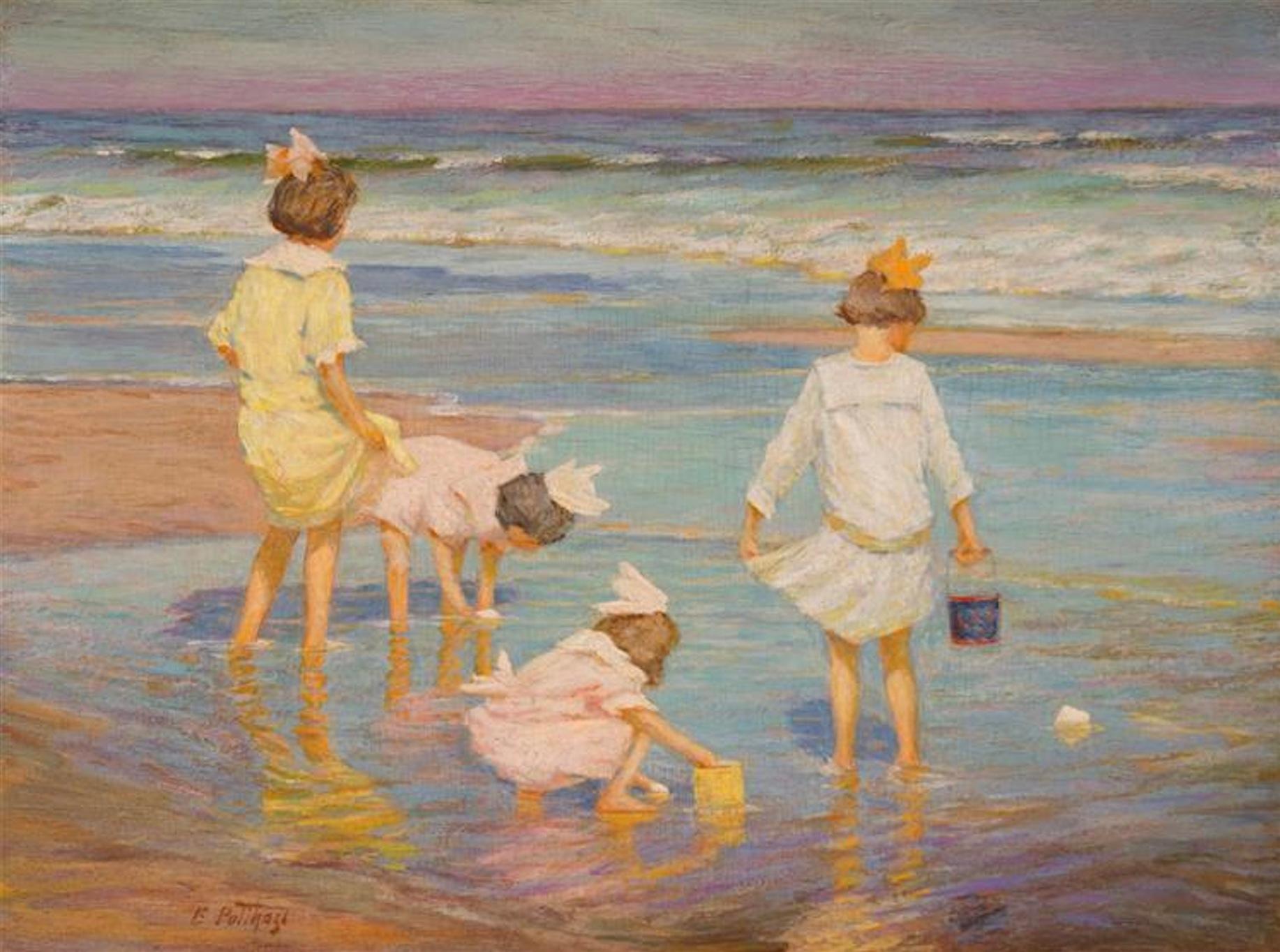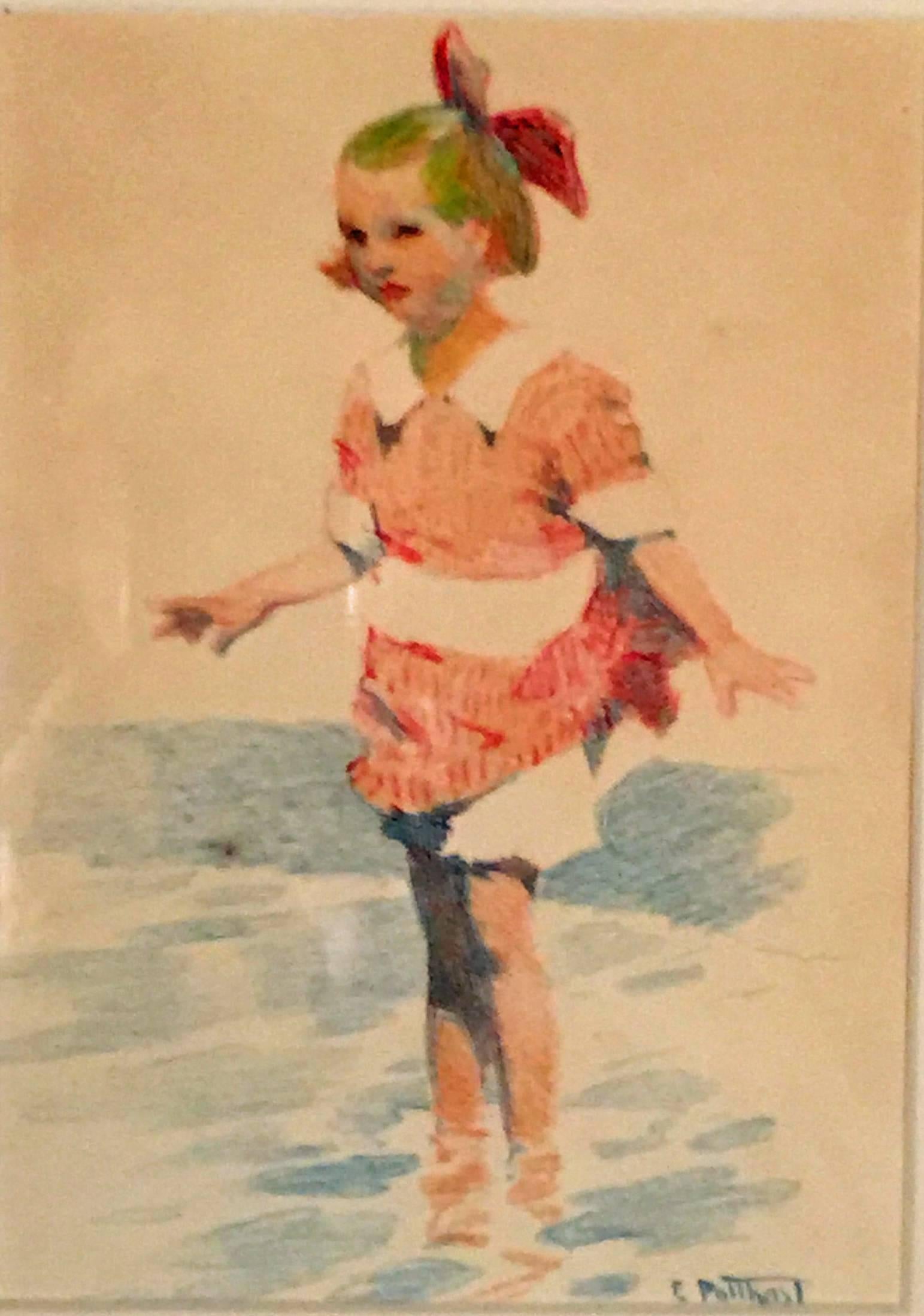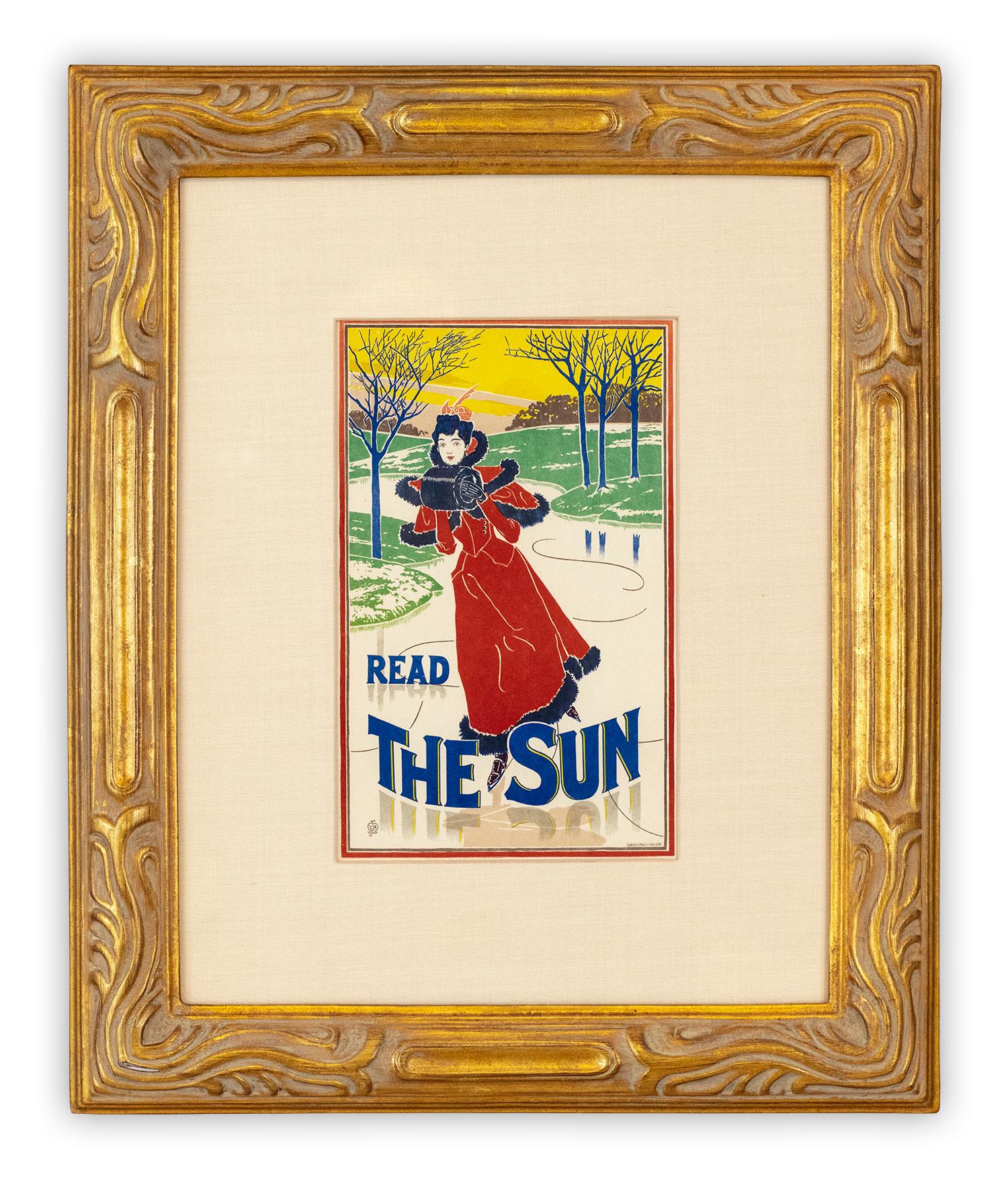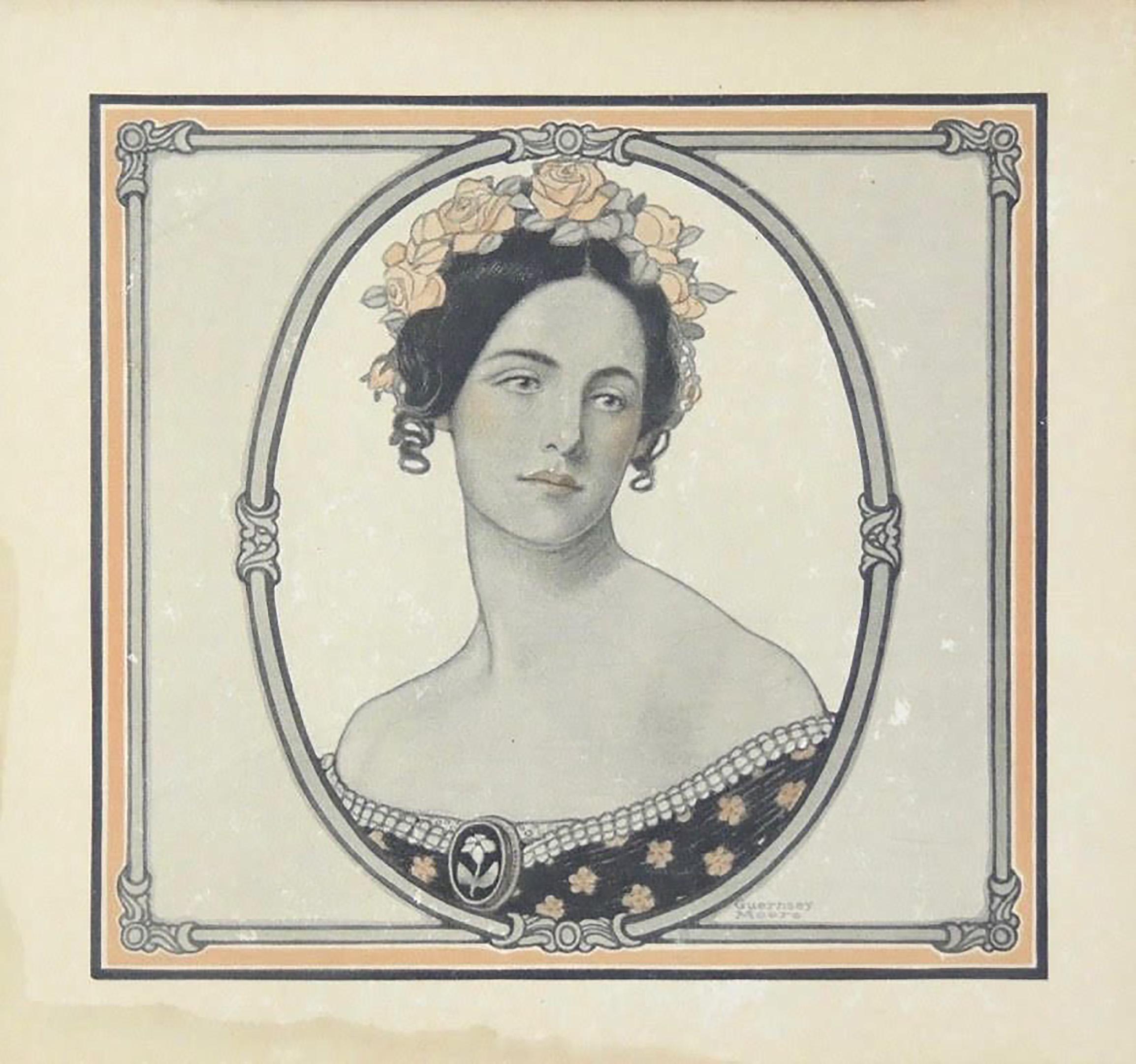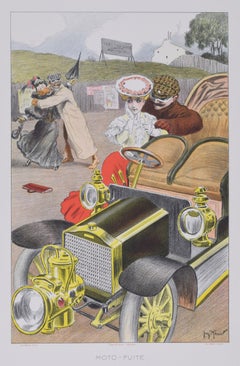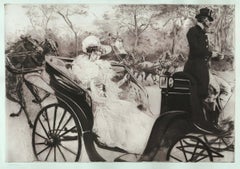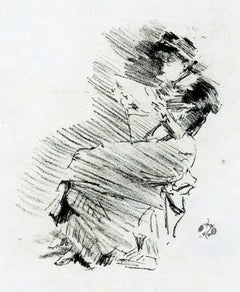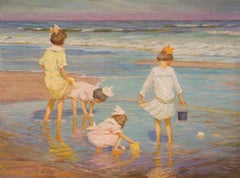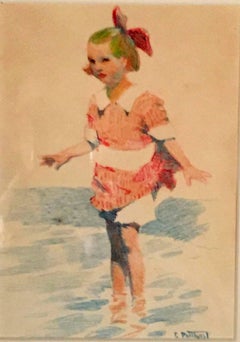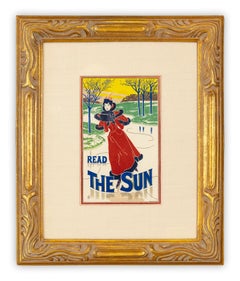Items Similar to The Century Magazine
Want more images or videos?
Request additional images or videos from the seller
1 of 11
Edward Henry PotthastThe Century Magazine1896
1896
$1,200
£914.76
€1,045.04
CA$1,688.57
A$1,849.51
CHF 973.77
MX$22,073.25
NOK 12,409.77
SEK 11,344.40
DKK 7,809.24
About the Item
After Edward Henry Potthast
The Century Magazine
Chromolithograph, July 7, 1896
Printed by W.B. Orcutt Co., NY
Note: This image won an honorable mention in a poster contest sponsored by The Century in 1896. As a result, it was immediately used for the magazine’s next poster. Potthast continued his artistic career and became famous for images of bathers in the surf of the Atlantic Ocean.
Condition: excellent
Frame size: 21 1/4 x 15 3/4 inches
References: DFP-1413, Reims 1281, Virginia p. 83.
Note: This image won an honorable mention in a poster contest sponsored by The Century in 1896. As a result, it was immediately used for the magazine’s next poster. Potthast continued his artistic career and became famous for images of bathers in the surf of the Atlantic Ocean.
Biography
American Impressionist Edward Henry Potthast is best known for sunny beach scenes, filled with sparkling surf and high-keyed details such as balloons, hats and umbrellas. He was born to a family of artisans in Cincinnati, Ohio, on June 10, 1857. At age twelve he became a charter student at Cincinnati's new McMicken School of Design. He studied at McMicken, off and on, for over a decade. From 1879 to 1881, his teacher was Thomas Satterwhite Noble. Noble, a portrait and figure painter, employed a dark palette and a rich, painterly technique derived from his instruction under French artist Thomas Couture.
Potthast made his first trip to Europe in 1881. After a visit to Antwerp, where he studied with Polydore Beaufaux and Charles Verlat, Potthast proceeded to Munich perhaps on a visit that had been prearranged with Noble, who was also in Munich in the early 1880s. Munich and its Royal Academy strongly had long been a destination for Cincinnati artists. Potthast and Noble had been preceded by fellow Cincinnatians John Henry Twachtman, Robert Blum, Joseph De Camp, and Frank Duveneck, who alternately taught in Munich and Cincinnati. At the Royal Academy, Potthast studied with the American-born instructor Carl Marr (von Marr, after 1909), who was known for his adroit handling of light and shadow in realistically rendered works. Potthast completed his European tour with a visit to Paris, where he studied for about a month and a half at the Academie Julian.
Returning to Cincinnati in 1885, Potthast resumed his studies with Noble, while earning his living as a lithographer. At this time, his painting style was much influenced by the Munich School, which was, in turn, influenced by the Dutch painting tradition. Potthast's paintings, which included both interiors and landscapes, displayed sound draftsmanship and dark tones applied with solid unbroken strokes. At the end of 1886, he again departed for Paris, where he studied with Fernand Cormon and, possibly, with Jules-Joseph Lefebvre. In 1889 he met American Robert Vonnoh and Irishman Roderic O' Conor, landscape painters who were working at Grcz. The cool-toned, Impressionist paintings with scumbled surfaces these painters and others at the Grcz colony were making had a profound impact on Potthast's palette. His conversion to Impressionism was immediate and irrevocable. When he returned to Cincinnati, he carried back light-filled canvases, paintings such as Sunshine, 1889 (Cincinnati Art Museum), a painting of a girl in an outdoor setting, which had been exhibited in the Paris Salon of 1889. When the exhibition entitled "Light Pictures" opened in 1894 at the Cincinnati Art Museum, Potthast was the only American artist included in the show.
Even though he enjoyed modest success in his hometown, Potthast made the decision to leave Cincinnati in 1895 and establish himself in New York City. While he went about setting up a painting studio, he fulfilled illustration commissions for the publications Scribner's, Century, and Harper's. He exhibited watercolors and oil paintings in exhibitions at the Art Institute of Chicago beginning in 1896, and at the National Academy of Design from 1897. He won the academy's Thomas B. Clarke prize for best figure painting in 1899, the same year was he was elected an associate of the academy. Potthast was made a full academician in 1906.
After his move to New York, Potthast made scenes of people enjoying leisurely holidays at the beach and rocky harbor views his specialty. He spent summer months in any one of a number of seaside art colonies, including Gloucester, Rockport and Cape Cod in Massachusetts, and Ogunquit and Monhegan Island, Maine. Such was his love of the beach that, when he resided in New York, he would journey out on fair days to Coney Island or Far Rockaway with his easel, paintbox, and a few panels.
Potthast never married. He was an extremely private person, though he was close to his nephew and namesake, Edward Henry Potthast II (1880-1941), who also was an artist. Potthast died alone in his New York studio on March 9, 1927.
The paintings of Edward Henry Potthast are represented in public collections across the United States, including the Museum of Fine Arts, Boston; Brooklyn Museum of Art, New York; Butler Institute of American Art, Youngstown, Ohio; Art Institute of Chicago; Cincinnati Art Museum; Georgia Museum of Art, Athens; Metropolitan Museum of Art, New York; and Pennsylvania Academy of the Fine Arts, Philadelphia.
Edward Potthast spent many days at the beach painting scenes of children and their families. Through his artwork, he captured the peacefulness of the children. Although he never had children and was a somewhat private person, he clearly enjoyed their company.
Potthast is one of the top beach scene painters by any American artist today which accounts for the rather steep prices of his artwork.
David W. Kiehl, American Art Posters of the 1890's (New York: Metropolitan Museum of Art, 1987)
- Creator:Edward Henry Potthast (1857-1927, American)
- Creation Year:1896
- Dimensions:Height: 21.25 in (53.98 cm)Width: 15.75 in (40.01 cm)
- Medium:
- Movement & Style:
- Period:
- Condition:Very Good, consistent with age.
- Gallery Location:Fairlawn, OH
- Reference Number:Seller: FA104401stDibs: LU14015881142
Edward Henry Potthast
Edward Henry Potthast was born in Cincinnati in 1857, the son of a German cabinetmaker. Along with contemporaries Frank Duveneck and John Henry Twachtman, Potthast eventually became one of the most significant artists to emerge from the burgeoning art milieu of Cincinnati during the nineteenth century. Potthast received his early art training at the McMicken School of Design in Cincinnati while supporting himself as a lithographer and illustrator. In the fall of 1882, he traveled to Antwerp in the company of fellow artists Joseph Henry Sharp and Charles Haider. After a brief period of instruction in the studio of Charles Veriat, he went on to Munich. During the next three years he studied under Nicolas Gysis, Ludwig von Loefftz and possibly, Carl Marr. Returning to Cincinnati in 1885, he resumed work as a lithographer and took evening classes at the Cincinnati Museum Association. He went to Europe again in 1887 and for the next few years divided his time between Munich and Paris. In 1889 or 1890, he visited Grez. Although he had concentrated on figure painting while in Munich, a meeting with the American Impressionist painters Robert Vonnoh and Roderick O'Conor in Grez, prompted him to turn to landscape subjects and a lighter, more colorful palette. Potthast returned to Cincinnati around 1892, where he continued to work as a lithographer. In 1896, he moved to New York City, free-lancing for such popular magazines as Scribner's and Century and painting in his spare time. He soon became a lively figure in New York art circles, exhibiting and receiving numerous awards and prizes at the National Academy of Design, the Society of American Artists and the American Water Color Society. After developing a steady clientele for his paintings (he had dealers in Chicago and Cincinnati as well as New York), he was able to give up his work as a lithographer entirely. Potthast was the first Cincinnati-based artist to work in the Impressionist mode. Although he continued to paint landscapes throughout his career, after his move to New York, he became renowned for his optimistic, sun-drenched beach scenes in which he combined the vivid colors of Impressionism with the strong brushwork of the Munich School. Among his favorite sites were Coney Island and Rockaway Beach, both readily accessible from New York City. He also took frequent trips along the New England coast, stopping frequently at Ogunquit, Maine. His other painting locales included the Grand Canyon and the Canadian Rockies, where he sought in search of new sketching material.
About the Seller
5.0
Recognized Seller
These prestigious sellers are industry leaders and represent the highest echelon for item quality and design.
Gold Seller
Premium sellers maintaining a 4.3+ rating and 24-hour response times
Established in 1978
1stDibs seller since 2013
835 sales on 1stDibs
Typical response time: <1 hour
Associations
International Fine Print Dealers Association
- ShippingRetrieving quote...Shipping from: Fairlawn, OH
- Return Policy
More From This Seller
View AllThe Century Magazine
By Edward Henry Potthast
Located in Fairlawn, OH
After Edward Henry Potthast
The Century Magazine
Chromolithograph, July 7, 1896
Printed by W.B. Orcutt Co., NY
Note: This image won an honorable mention in a poster contest sponsored...
Category
1890s Art Nouveau Portrait Prints
Materials
Lithograph
Moto-Fuite
By Georges Meunier
Located in Fairlawn, OH
Moto-Fuite
Color lithograph, c. 1902
Signed in the stone lower right (see photo)
Published by Edmund Sagot (1857-1917), Paris
Printed by Atelier Chaix, Paris
Large edition with titl...
Category
Early 1900s Art Nouveau Figurative Prints
Materials
Lithograph
La Promenade
By Edgar Chahine
Located in Fairlawn, OH
La Promenade
Etching, soft-ground, aquatint & drypoint,
Signed in pencil lower left
Published by Edmund Sagot, Paris
Edition of 50 in black only, aside from the edition of 50 in co...
Category
Early 1900s Art Nouveau Figurative Prints
Materials
Drypoint, Etching, Aquatint
Reading
By James Abbott McNeill Whistler
Located in Fairlawn, OH
Reading
Lithograph, 1879 and 1887
Signed in the stone with the Butterfly (see photo)
A proof laid paper printed before the edition of 100 impressions printed for Art Notes
Watermark:...
Category
1870s American Impressionist Figurative Prints
Materials
Lithograph
Poster for the Saxon Trade and Art Exhibition, Dresden 1896
Located in Fairlawn, OH
Poster for the Saxon Trade and Art Exhibition, Dresden 1896
Color lithograph poster mounted on heavy linen, 1896
Signed in the stone lower left corner (see photo)
Proof before additi...
Category
1890s Jugendstil Figurative Prints
Materials
Lithograph
Heureux age! (Happy Age!)
By Victor Mignot
Located in Fairlawn, OH
Heureux age! (Happy Age!)
Etching and aquatint. c, 1900
Signed lower right in pencil
Edition; 50 (14/50)
Published by Edmund Sagot, Paris
Sagot blindstamp, Lugt 2254, lower right
Con...
Category
Early 1900s Art Nouveau Figurative Prints
Materials
Aquatint
You May Also Like
Wading
By Edward Henry Potthast
Located in New York, NY
EDWARD HENRY POTTHAST
(American, 1857-1927)
Wading
oil on board
signed E. Potthast, l.l.
11 1/4 x 15 1/2 in. (18 1/2 x 22 1/2 in.)
Provenance: Traxel Art Galleries, Cincinnati,...
Category
Late 19th Century Impressionist Figurative Paintings
Materials
Oil, Board
$285,000
GIRL WADING
By Edward Henry Potthast
Located in Portland, ME
Potthast, Edward H. GIRL WADING. Colored pencil drawing on paper, not dated. Signed recto, lower right "E. Potthast," lower right, and inscribed "Holiday Greetings" and signed "Edw. ...
Category
Late 19th Century American Impressionist Figurative Drawings and Waterco...
Materials
Color Pencil
Read the Sun by Louis Rhead, Art Nouveau Japon lithograph, 1897
By Louis Rhead
Located in Chicago, IL
“America was quick to reveal strong Art Nouveau voices; it was Louis Comfort Tiffany who encouraged Bing to open his salon, and artists Will Bradley and Ethel Reed exhibited a Japonist simplicity that presented a strong, refined take on the Art Nouveau ideal. Louis Rhead was born in England but emigrated to the United States in 1883 at the age of 24, and quickly found himself celebrated both in the United States and in France, exhibiting his designs in the prestigious Salon des Cent in Paris in 1897.”
-Quoted from Flowering Lines: Rare Art Nouveau Graphics 1883-1911 by Thomas Negovan (2017)
Lithograph of Louis Rhead’s Read The Sun, published in 1897 by Imprimerie Chaix, the printing house known for publishing the works of Belle Epoque master Jules Chéret.
While this poster was printed in multiple sizes and formats, this 1897 edition of 25 strikes on Japon paper is the most desirable and extremely scarce edition. Japon paper allows inks to rest upon its surface rather than being absorbed by a more permeable paper stock. The rare, small format poster lithographs created at this time were printed using rich, dense, lead inks. This world-class example of lithography captures superior resolution and color-richness to that of its large-format counterpart.
This piece is presented professionally framed using all archival materials, including a hand-wrapped silk mat. This work arrives accompanied by a certificate of authenticity.
Notable museum collections featuring works by John Louis...
Category
1890s Art Nouveau Prints and Multiples
Materials
Lithograph
Women Enjoying a Book - Original lithograph (L'Estampe Moderne 1897-1898)
By Louis Welden Hawkins
Located in Paris, IDF
Louis Welden HAWKINS
Women Enjoying a Book, 1898
Original lithograph (Champenois workshop)
Printed signature in the plate
On vellum, 40 x 31 cm (c. 16 x 12 in)
INFORMATION: Lithogr...
Category
1890s Art Nouveau Figurative Prints
Materials
Lithograph
Portrait of a Woman, Saturday Evening Post Cover, March 1907
By Guernsey Moore
Located in Fort Washington, PA
Medium: Unknown
Signature: Signed Lower Right
Saturday Evening Post Cover
Category
Early 1900s Portrait Drawings and Watercolors
Materials
Paint
Imperia (Caprices of Verlaine) - Original Lithograph 1899
Located in Paris, IDF
Alfred Pierre AGACHE (1843-1915)
Imperia (Caprices of Verlaine), 1899
Original lithograph (Champenois workshop)
Printed signature in the plate
On vellum, 40 x 31 cm (c. 16 x 12 in)
...
Category
1890s Art Nouveau Figurative Prints
Materials
Lithograph
More Ways To Browse
Henry Ii
Antique Surf
Thomas Henry Thomas
Rembrandt Portrait Of Son Titus
Roy Lichtenstein Reclining Nude
Shepard Fairey Ali
Shepard Fairey Obama
Shepard Fairey Ramone
Shepard Fairey Women
Signed Patrick Nagel Print
Sperry Posters
Warhol Einstein
Warhol Geronimo
Warhol Howdy
Warhol Paloma Picasso
Alberto Vargas On Sale
Alexander Ivanov
Andrew Wyeth Helga
